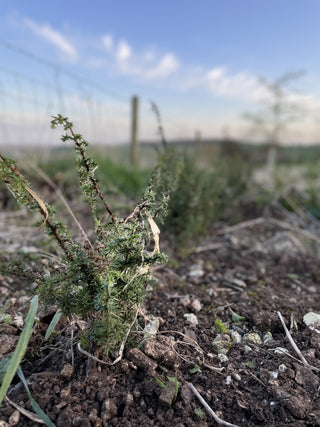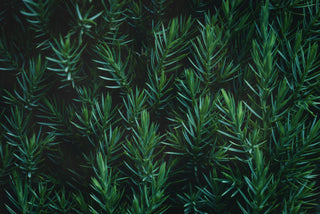Thank you to those who continue to support our conservation work. One of our projects is the rewilding of Juniper. To date we have two groves / colonies, with twenty plants in each which are carefully maintained and looked after on the Wiltshire Downs.
Whilst the plants might not look mighty, as they grow and flourish, they will bring positive change to their natural environment.
Common juniper (Juniperus communis) is one of only three conifers native to the UK appearing after the last Ice Age. It is a member of the cypress family found growing on chalk or limestone in lowland areas, wet moors, and windblown cliffs. Whilst a hardy plant it is in rapid decline and is designated a UK Biodiversity Action Plan priority species.
It has completely disappeared from several areas in the south of England, with remaining colonies so small that they're considered functionally extinct. On the Wiltshire Downs this iconic shrub has failed to regenerate for the past 60 years and as the bushes reach the end of their lives, whole colonies are dying out.
There are various factors that are causing the crash. These are due to it being slow growing, fruit take 3 years to mature, overgrazing, forest creation (conifers blocking the light), and changes in farming practices. Young plants also need some care to ensure that other plants (nettles for us) do not overwhelm them.
Another cause is that there is no diversity (male and female) in some colonies. It is impossible to tell the difference between the plants unless they are pollinating or have been pollinated.
In March the male plant produces small sacks of pollen on its branches. Once pollinated by wind, the green female cones take three years to mature into fleshy, purple, aromatic, berry-like cones. Harvesting is completed by placing cloth onto the ground and then shaking the branches causing the cones fall.
Juniper can vary in height and can live up to 200 years, providing a diverse habitat for beetles and birds. But it also provides a habitat for other plants like wild candytuft and musk orchids.
We will also transplant some of these plants across to where the Great Bustards are found on Salisbury Plain, another natural habitat for this species.





